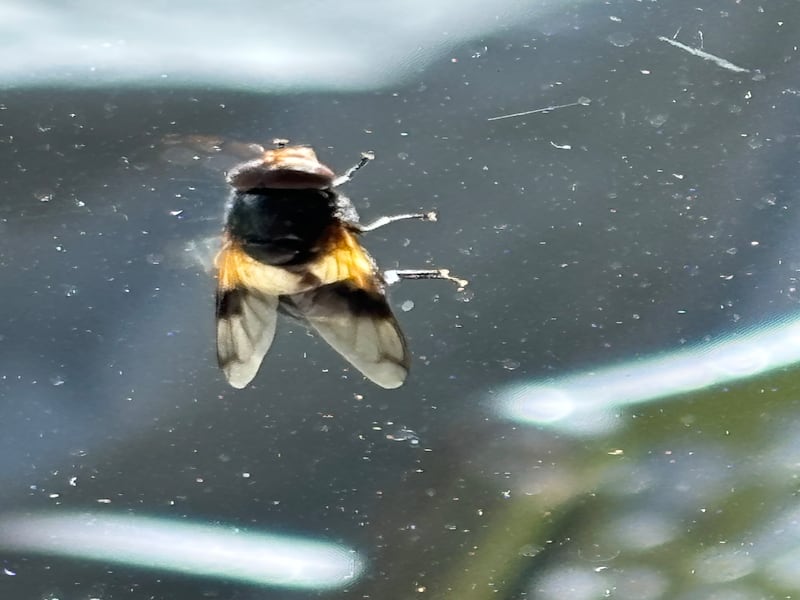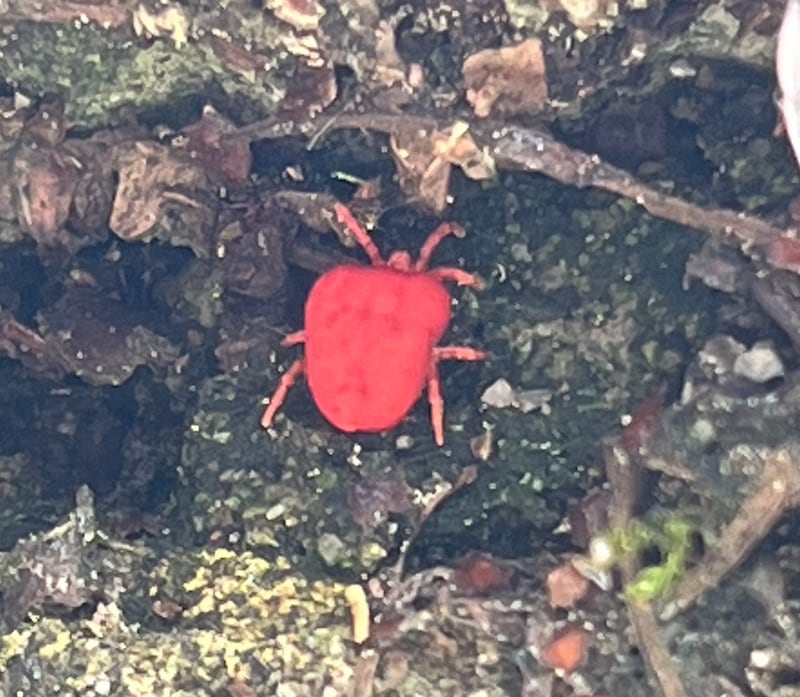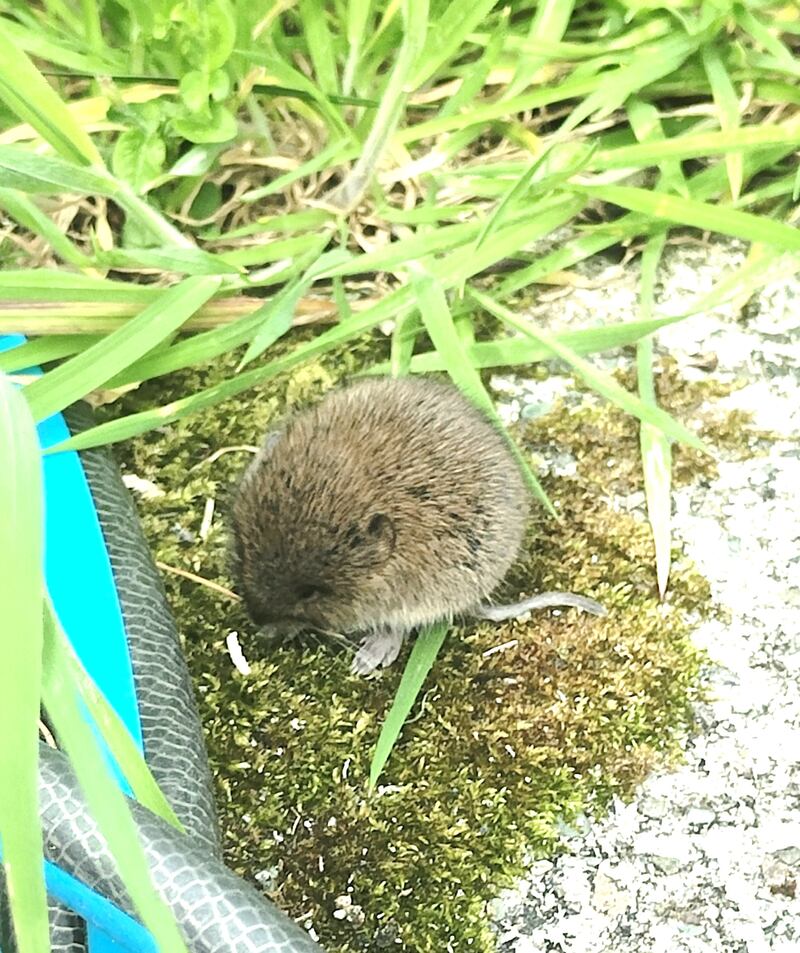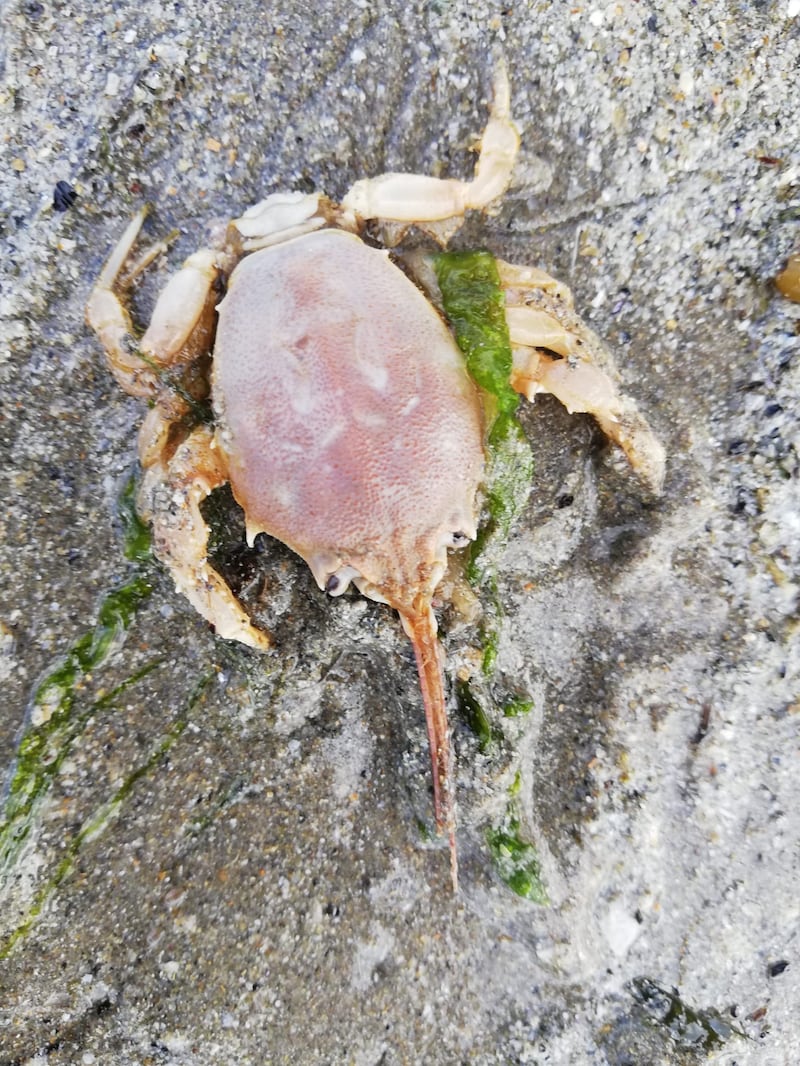I recently saw these birds in Gougane Barra at the back of the hotel and wondered why the baby bird seemed bigger than her mother. Or, indeed, is this a bonding exercise between a pair? Rosaleen Power, Co Cork
There is no easy way of determining gender in song thrushes, so these could be either male or female. This is a parent with a begging youngster, which has the typical speckled upperparts of a juvenile rather the plain brown of the adult. It has fluffed up its feathers and is standing up straight, demanding food from its careworn parent, which has already spent 15 days dancing attendance on it in the nest. The good times will last only a few more days.

This rather strange-looking fly, the size of a bluebottle, flew into the kitchen recently. Part of its abdomen appeared translucent, particularly when the light was shining on it. I haven’t seen one like this before. Richard Murphy
This is a pellucid hoverfly (Volucella pellucens). It is often found along hedgerows or in woodland clearings, where it feeds on the nectar of the bramble flowers. It lays its eggs in the nests of common wasps (Vespula vulgaris), where the larvae, on hatching out, act as scavengers and feed on whatever debris they can find in the nest. It is common enough, with most records for the south and east of the country.
READ MORE

We recently noticed this tiny bright red spot moving across the outdoor paving. When we took a photograph, we saw that it had eight legs. Is it a spider? Patricia May, Co Dublin
Aren’t mobile phone cameras great? This bright red spot is a velvet spider mite, Trombidium holosericeum, which has a body length of 4mm at most. Your magnification shows it to have an apple-shaped body and eight stripy legs. Schoolchildren call them blood suckers, but they are harmless to us. They are carnivores and feed on small invertebrates and their eggs. They emerge from hibernation in spring and can be seen on stones, walls, garden paths and so on.

We deliberately didn’t mow our back garden this May and recently had a timid, frightened visitor. I think it was a short-tailed field vole, which we gently nudged back into the grasses and bramble, where he busied away into the moss and cloak of cover. Frances van Velzen, Co Mayo
Great to see No Mow May bringing such positive results. This is a bank vole – the only vole species we have in Ireland since it arrived at the beginning of the 20th century. DNA studies found their close relations in a part of Germany, from whence the turbine for the power station at Ardnacrusha was sent in the 1920s. Evidently a bank vole or two was caught up in the packaging. It has now spread all over the south and west. It feeds mainly on seeds and green leaves and a small amount of invertebrates. It can live for about 20 months. Very few survive through two winters.

I have never seen one of these before. What is it? Richard Neville, Co Cork
It is the remains of a masked crab. These have a shell that is longer than it is broad and, like all crabs, have five pairs of legs. In the males only, the first pair is exceedingly long, but these are now entirely missing from your specimen. The long hairy antennae at the front of the head are held together throughout the length, and as the habitat for this species is buried in sand on the lower shore, the crab uses them like a long pipe to allow water to reach its gills.
Please submit your nature query, observation, or photo, with a location, via irishtimes.com/eyeonnature


















